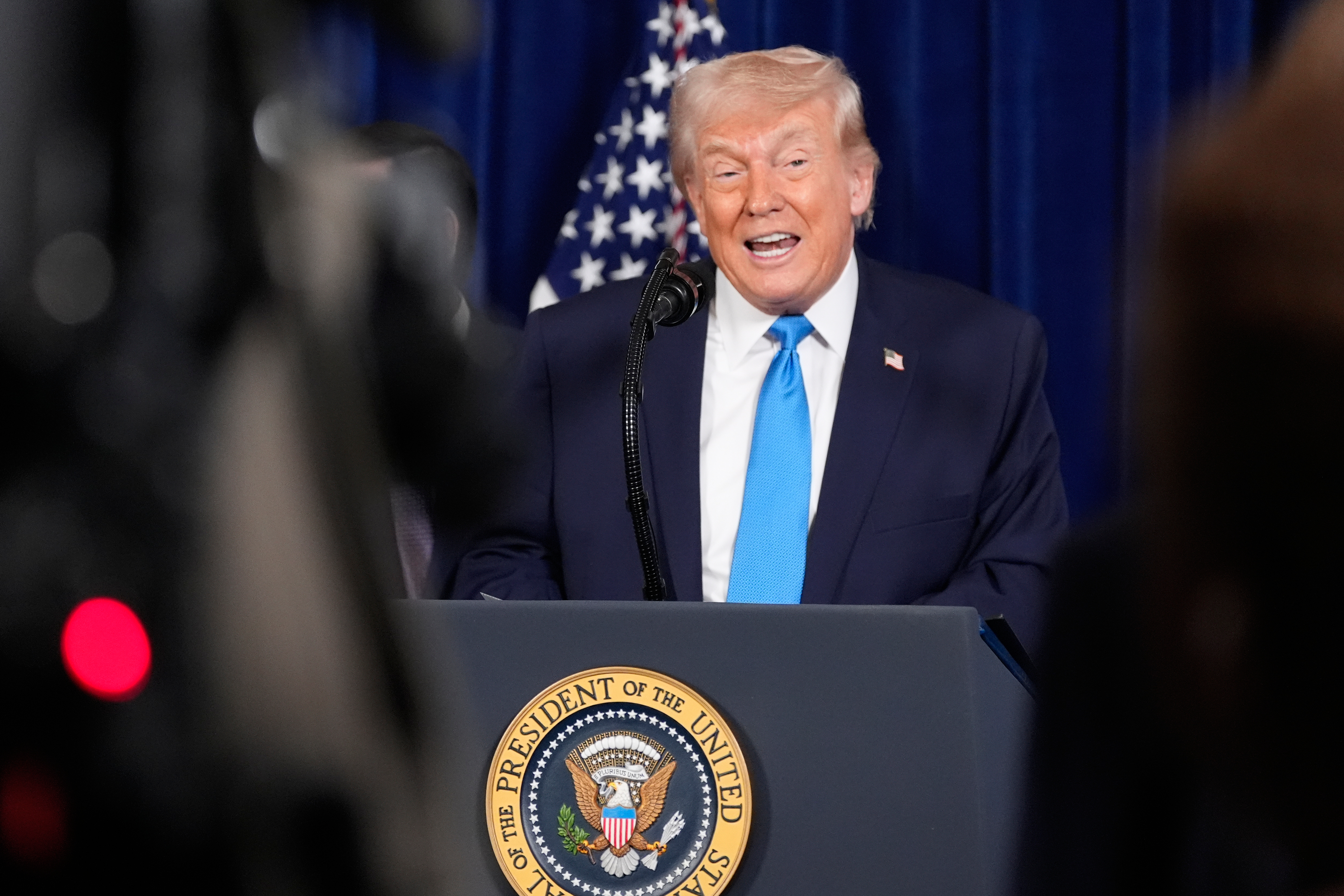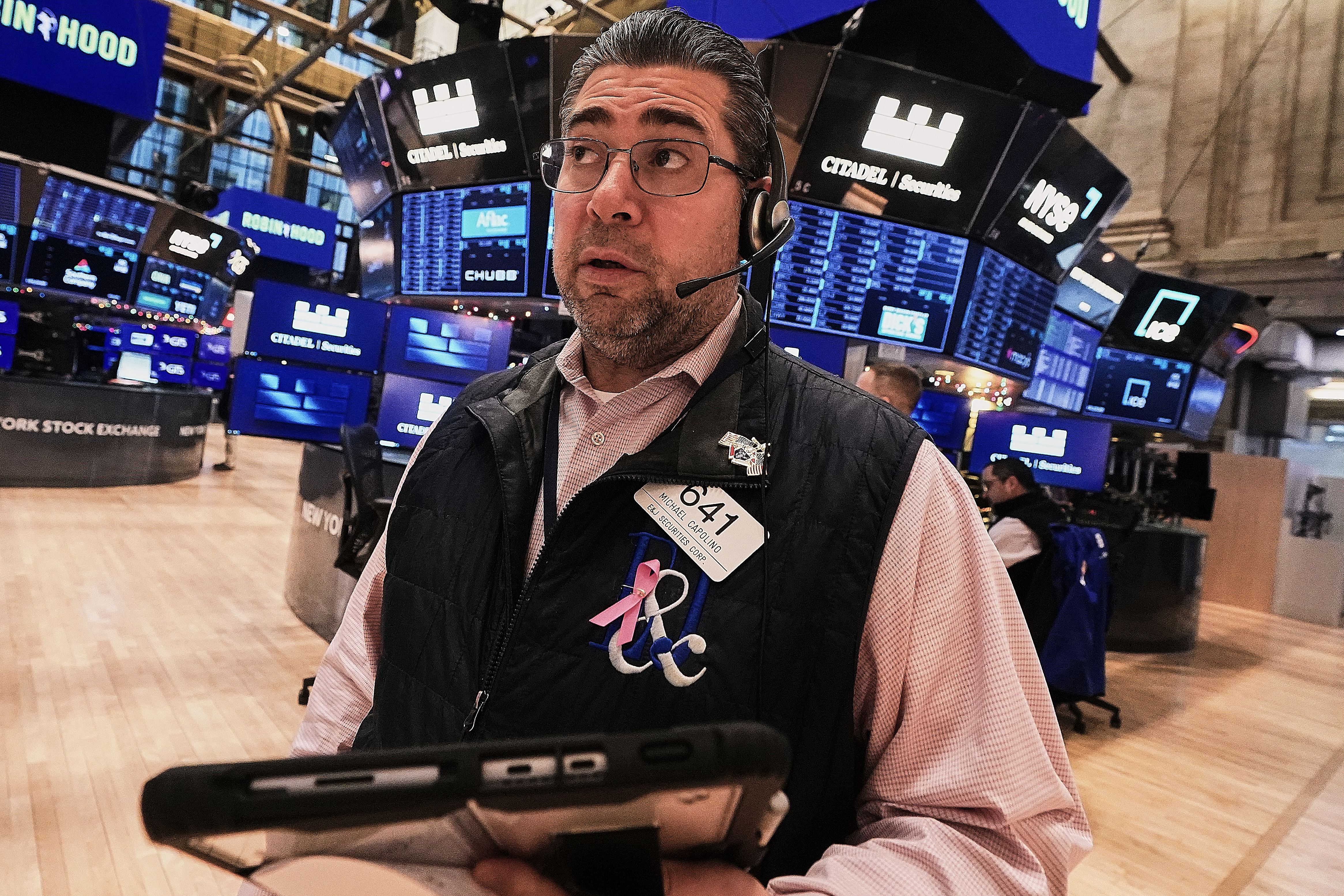In Ferguson, Missouri, in 2014, police officers shot and killed 18-year-old Michael Brown after confronting him over a report of shoplifting.
As his death catalyzed mass protests, people were shocked to see what looked like a full army descending on Ferguson in response.
"Those lawful peaceful protesters did not deserve to be treated like enemy combatants," said Sen. Claire McCaskill.
There were heavily armed police in tactical gear carrying assault rifles, grenade launchers and tear gas — both during riots and peaceful protests.
Radley Balko, an investigative journalist and author of the book "Rise of the Warrior Cop" says the ensuing clashes between police and protesters shocked military veterans.
"The local police met the protesters with this massive shooting force, including a sniper who was mounted on top of an armored personnel carrier and was pointing a gun at the protesters," Balko said. "They were outraged, and said, you know, if
we did that to do two suspected terror cells in Afghanistan and Iraq ... we'd be court martialed.
The weapons in the videos are often called "military-style" or "military-grade."
They’re not official or legal terms, but generally refer to weapons with military-weapon-inspired appearances and caliber, or ones that meet military standards. Some gun rights advocates even characterize them as marketing terms.
But the Ferguson clashes ignited public debate: Do police need these types of weapons?
Garry McCarthy served as superintendent of the Chicago Police Department for over three years. He says military-style weapons are not necessary for patrol. He thinks police need those types of weapons in certain situations. For example, they can be crucial in protecting the lives of officers in high-risk situations.
"There are circumstances where we have to extract people from live fire zones. You need an armored vehicle to actually do that. And there's going to be times where our swat units are going to have to go into a house and conduct a raid where there are shots being fired," McCarthy said.

Irvo Otieno's family begs for improvement in mental health
The family of a Virginia man who died in police custody is demanding action after video of the incident was released.
But there is criticism about small departments across the country acquiring helicopters, MRAPs and other tactical vehicles originally designed for the battlefield — like Dundee, Michigan, which got an MRAP in 2014. At the time, the population was just around 3,900. And in 2012, Balko says some residents of Keene, New Hampshire were shocked to see the SWAT vehicle turn up on city streets — questioning whether the city of roughly 23,000 needed an armored tactical vehicle.
"I remember interviewing this woman who said, '...Do I want to wake up in the morning and look out my kitchen window and see a piece of military equipment there? Is that the kind of town that I want to live in?,'" Balko said.
But, Balko agrees there is a role for some military-grade equipment, like protective gear.
"It's about keeping that role limited to when that type of gear is appropriate and about ensuring that we protect this idea that police officers are guardians, not warriors,"Balko said.
Police use of military-grade equipment dates back to the 1970s, but Balko says it accelerated after 9/11.
The Pentagon had already been distributing free surplus military-grade equipment to police departments under its "1033 Program" which still exists today.
But, after the terror attacks, the Department of Homeland Security created anti-terror grants for police to buy brand new military-grade equipment, from armored trucks to ballistics gear.
"Departments all across the country from Fond du Lac, Wisconsin, to Boise, Idaho, you know, tiny towns in Texas get these grants," Balko said. "This is new stuff. So you've created an industry that exists solely to create this new equipment in exchange for these DHS checks."
And since 1033’s inception almost 30 years ago, the government says it’s sent over $7.5 billion worth equipment to nearly 9,000 law enforcement agencies.

Mourners call for police reform at Tyre Nichols' funeral
Tyre Nichols' memorial brought a civil rights message and renewed calls to action against police killings of black people.
Most items are extra coffee makers, boots, first aid kits or even sleeping bags. But according to Balko, they also include heavy machinery.
"Weapons, helicopters, guns, grenade launchers, bayonets, that sort of thing," Balko said.
Certain machines and weapons are banned, like tanks, fighting vehicles, certain large caliber weapons and explosives. Training resources for any equipment sold under the 1033 program is only available by request.
Balko and other critics fear the combination of the weapons and a potential lack of proper training create a warrior mindset.
"When you dress a police officer in camouflage, you make him think he's a soldier ... And that affects both how the officer sees his own job and also how the community sees that officer," Balko said.
In a 2017 study of 1033 transfers and police killings, researchers found departments that receive this equipment also saw an uptick in police shootings of civilians and other violence.
The study also found that police shootings of dogs increased, suggesting that the uptick wasn't explained by departments predicting and then confronting a rise in violent crime.
Researchers noted, in psychology this is known as the "law of the instrument" where having a certain tool makes it more likely that you'll use the tool — even if better ones are available.
Garry McCarthy, who's spent decades on the force, intimately understands the pressures that take hold while patrolling the streets.
"It's a dangerous world out there. I don't know if you've ever been so scared that you couldn't breathe. But sometimes it happens to police officers," McCarthy said. "Why is it reasonable to have military grade weapons, assault rifles in the hands of civilians and then say that maybe the police shouldn't have something?"
Research from the Violence Policy Center found that over a two-year period, one in five law enforcement officers who died in the line of duty were killed by an assault weapon.
Again, there's no universal definition of what makes a "military-style" or "assault-style rifle." But odds are if you're trying to picture one, you're picturing the AR-15 or weapons inspired by it. It's one of the most popular styles of rifle in America.
As of 2020, the The Industry Trade Group, The National Shooting Sports Foundation finds there were about 20 million AR-15-style weapons across the country. That includes weapons owned by police and civilians.
"It's true that there are a lot more guns. The types of guns that are used in the murder of police officers tend to be small caliber handgun. So it's not as if police officers are being gunned down because they don't have the kind of firepower they need to keep up with criminals," Balko said.
Critics of arming police with military weapons say there are situations in which they’re useful.
SWAT teams are good examples.
"There are a limited number of situations where I think even a critic of SWAT teams like me thinks that that kind of force is appropriate. And that's when you're using overwhelming force and violence to diffuse an already violent situation," Balko said.
SWAT was created with the intention of having a highly specialized and highly militarized unit to respond to emergencies like active shooters or hostage situations.

Gun violence has become a part of America's culture
A new poll shows more than half of Americans are affected by or have experienced gun violence.
That means using military-style equipment, from flash bang grenades to assault rifles – often acquired through the 1033 program, grants or police department budgets.
But, in a year-long study, the ACLU found just 7% of all SWAT raids were executed for active shooters, hostage-takers or barricade scenarios.
Nearly 80% of deployments were used to serve search warrants, mostly for drug searches of people suspected of crimes.
And as headlines show, police or SWAT raids involving military-style equipment sometimes ended in unintended deaths or debilitating injuries — including for children and pets.
When asked about cases of mistaken raids, McCarthy says humans are fallible.
"The information that we act on comes from generally confidential informants. We're talking about civilians. Humans make mistakes. Sometimes they're going to give us the wrong information. And there are steps that we take when we get a search warrant," McCarthy said.
The project on government oversight, which describes itself as a nonpartisan, independent watchdog suggests that Congress create specific policies and protocols for the training, use, and record-keeping of military-grade equipment.
And McCarthy says officers who abuse the equipment and their power need to be held accountable.
"Mistakes are made. And when they are made, we have to make sure that we're taking measures to try and prevent mistakes from happening in all things that we do," McCarthy said.










